The Secret World of Roman Perfumeries: Scent, Status, and Seduction reveals how fragrance was far more than a pleasant aroma in ancient Rome. Roman perfumeries crafted scents that spoke volumes about wealth, power, and allure. In a society obsessed with social hierarchy, scent became a silent yet potent language of distinction.
This article invites you to explore the hidden dynamics behind Roman perfumeries—how artisans blended exotic ingredients, how containers signified prestige, and how scent shaped identity in one of history’s most powerful civilizations.
The Origins and Evolution of Roman Perfumes
The origins of Roman perfumes trace back to practical beginnings. Early on, scents were primarily valued for their medicinal uses. Herbal oils and aromatic balms played roles in healing rituals and treatments. Romans believed fragrant substances could purify the body and ward off diseases.
Perfumes also held significant religious uses. Temples burned incense and used fragrant oils during sacrifices and ceremonies to please the gods, enhance spiritual experiences, and symbolize divine favor. These scented offerings established a sacred connection between scent and worship.
As Rome expanded into a powerful empire, the role of perfumes shifted dramatically:
- From purely functional applications to luxury scents enjoyed by the elite.
- Perfumes evolved into markers of refinement, sophistication, and social distinction.
- Emperors and wealthy citizens adorned themselves with rare fragrances crafted from exotic ingredients.
The transformation led to perfumes becoming potent symbols of wealth and power. Wearing or possessing certain scents was a visible sign of prestige — one that communicated status without words. The demand for luxurious aromas fueled an industry that intertwined culture, commerce, and social hierarchy.
This evolution set the foundation for exploring the rich variety of ingredients sourced from far reaches of the empire’s territories.
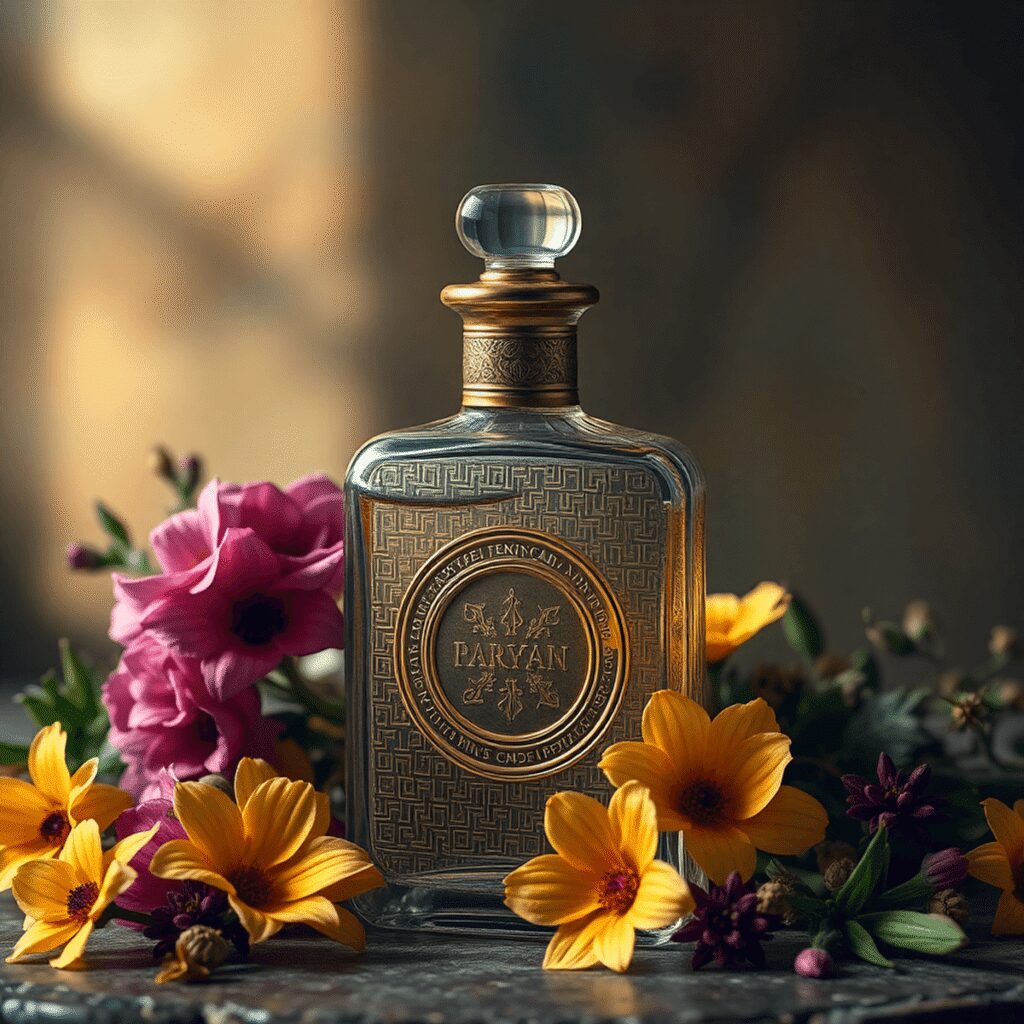
A Mediterranean and Beyond Palette: Ingredients and Sources
Roman perfumes thrived on a rich variety of natural ingredients that shaped their unique and alluring scents. Key components included:
- Flower petals such as rose, iris, and violet, prized for their delicate and fragrant oils.
- Spices like cinnamon, cardamom, and saffron, adding warmth and exotic notes.
- Precious resins including frankincense, myrrh, and benzoin, valued for their lasting aroma and sacred associations.
These ingredients were rarely native to Rome itself. Instead, they arrived through an extensive network of trade spanning the Mediterranean and beyond. The Roman Empire’s expansion opened access to regions abundant in aromatic resources:
- Egypt, renowned for its lotus flowers and myrrh.
- Syria, a source of balsam and other rare resins.
- Ethiopia, providing frankincense harvested from ancient trees.
- China, offering spices such as cinnamon carried along early Silk Road routes.
- The broader Middle East, a melting pot of fragrant herbs and spices.
Trade routes connecting these territories not only enriched the diversity of Roman perfumes but also elevated their cultural significance. Exotic ingredients became markers of sophistication and power, reflecting Rome’s global reach. The long journeys these materials undertook enhanced their mystique — each scent became a story of conquest, commerce, and craftsmanship woven into every bottle.
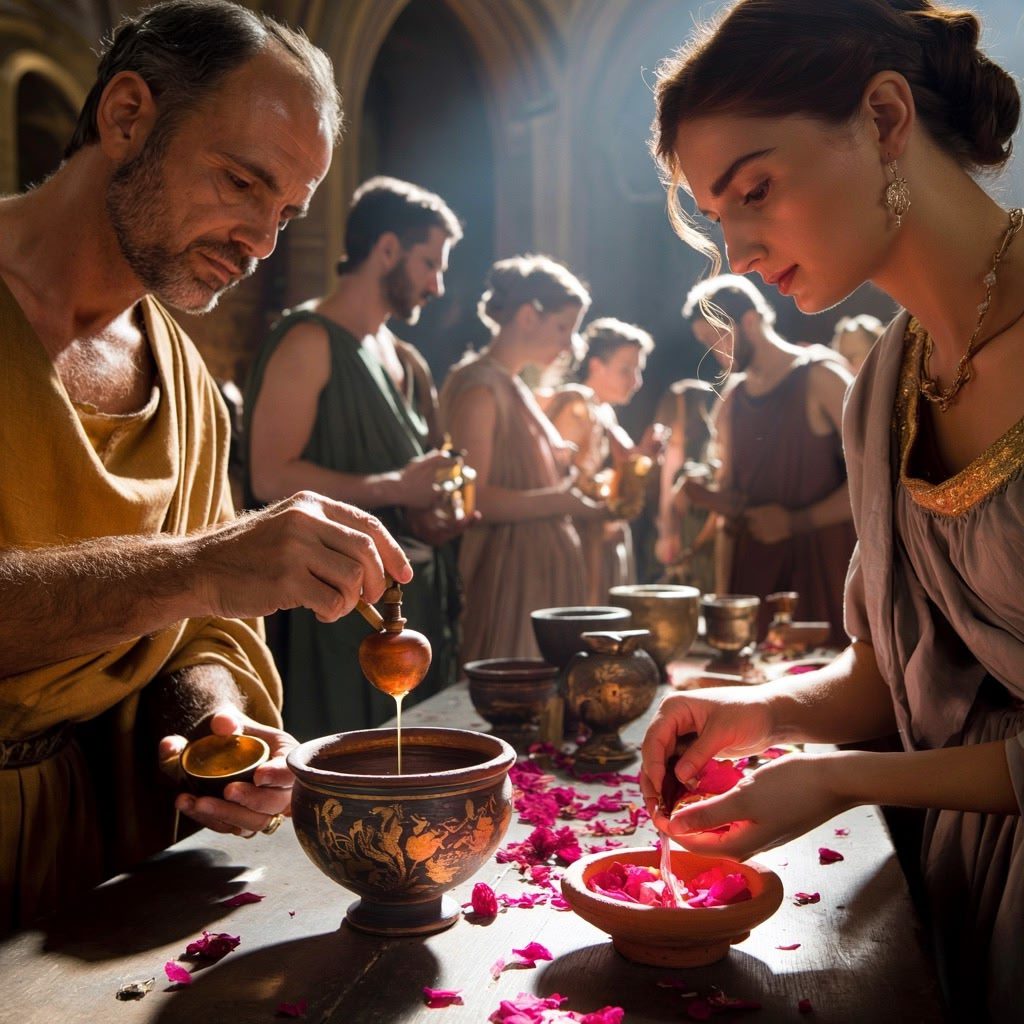
Crafting Roman Scents: Techniques and Materials in Perfume Production
Roman perfume production was distinct in its reliance on oils and fatty bases rather than alcohol, which was largely absent from their formulations. This method allowed scents to linger longer on the skin, creating a lasting impression that aligned perfectly with the social function of perfumes as markers of status and seduction.
Key techniques used in crafting Roman perfumes:
- Extraction through maceration and enfleurage: Flowers, herbs, and spices were soaked in oils or animal fats to absorb their fragrance. This slow infusion process ensured the delicate aroma was captured without degradation.
- Use of unguents (ointments): Instead of sprays or splashes, Roman perfumes were often semi-solid ointments. These were applied directly to the body or mixed with bathwater to create immersive scented experiences.
- Blending natural ingredients: Artisans combined floral notes like rose, violet, and lavender with exotic spices such as cinnamon and frankincense. Balms made from resins like myrrh added depth and longevity.
- Customization by social class: Wealthier Romans enjoyed more complex mixtures featuring rare imports. Simpler blends served everyday use among lower classes, maintaining accessibility while preserving exclusivity.
This approach to scent blending reflects The Secret World of Roman Perfumeries: Scent, Status, and Seduction—where craftsmanship met cultural expression. The absence of alcohol shaped a perfume tradition grounded in texture and intensity rather than volatility, reinforcing the intimate connection between fragrance and identity in ancient Rome.
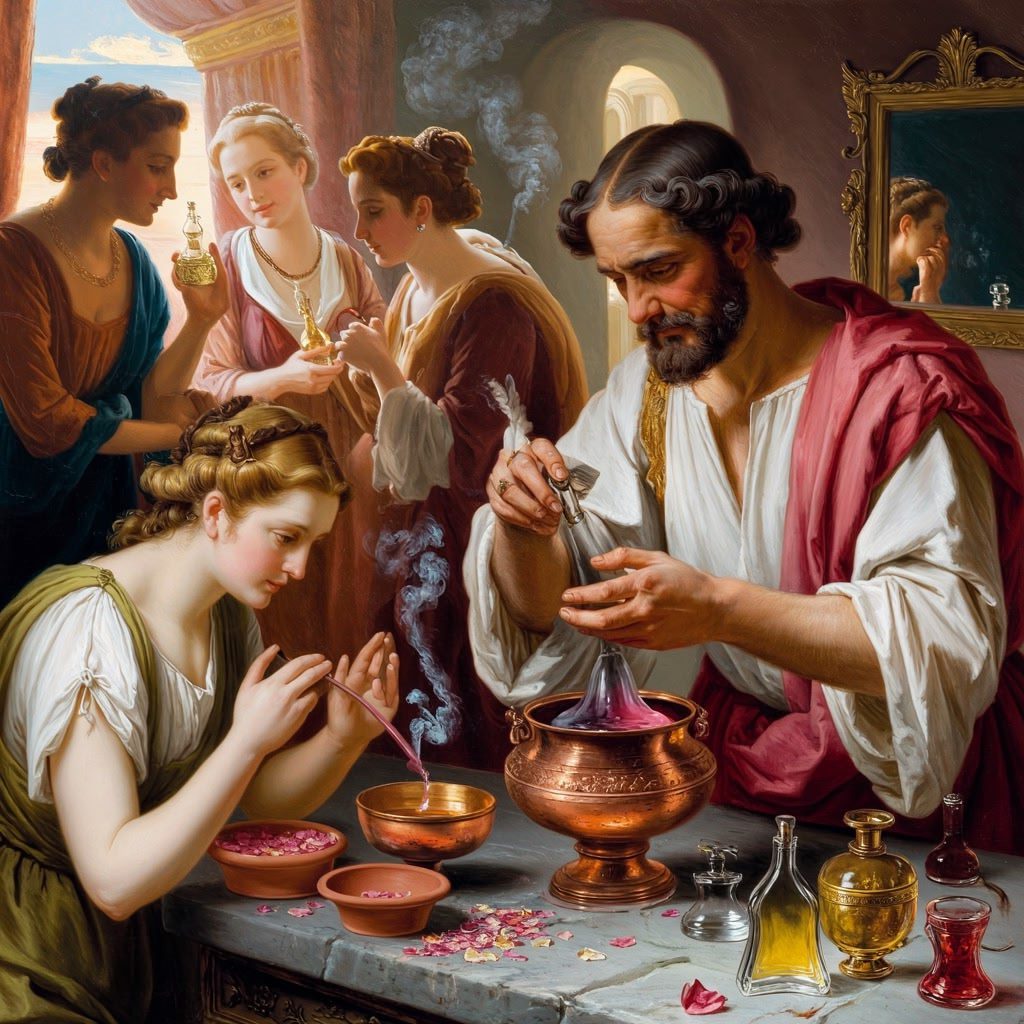
Perfume Containers: Vessels as Status Symbols Among Roman Elites
Roman perfume containers were more than just holders of scent; they were powerful indicators of wealth and social rank. The variety in vessel materials and shapes revealed much about the owner’s status. Common vessels were made from glass, terracotta, or simple ceramics—accessible to many. Yet, among the elite, the use of precious metals like gold vessels elevated the perfume’s value beyond its fragrance.
Distinctive features of these luxury packaging choices included:
- Materials: Gold, silver, and alabaster were favored for their durability and opulence.
- Shapes: Designs ranged from small flasks and delicate bottles to elaborate amphorae-inspired forms, often adorned with intricate carvings or embossed patterns.
- Decoration: Gemstones and enamel were sometimes embedded into the containers to emphasize exclusivity.
Elaborate containers increased the perceived prestige of perfumes exponentially. The expense involved in producing ornate vessels often rivaled or exceeded that of the fragrance inside. Roman elites prized these containers not only as practical items but as collectible art pieces displayed openly during banquets or in private chambers.
The emphasis on luxurious perfume containers underscored a broader cultural practice: scent was intertwined with visible symbols of power. Displaying an exquisite vessel communicated refinement and authority without uttering a word. This tangible representation of status through perfume containers reinforced social hierarchies, making these objects indispensable accessories in Rome’s elite circles.
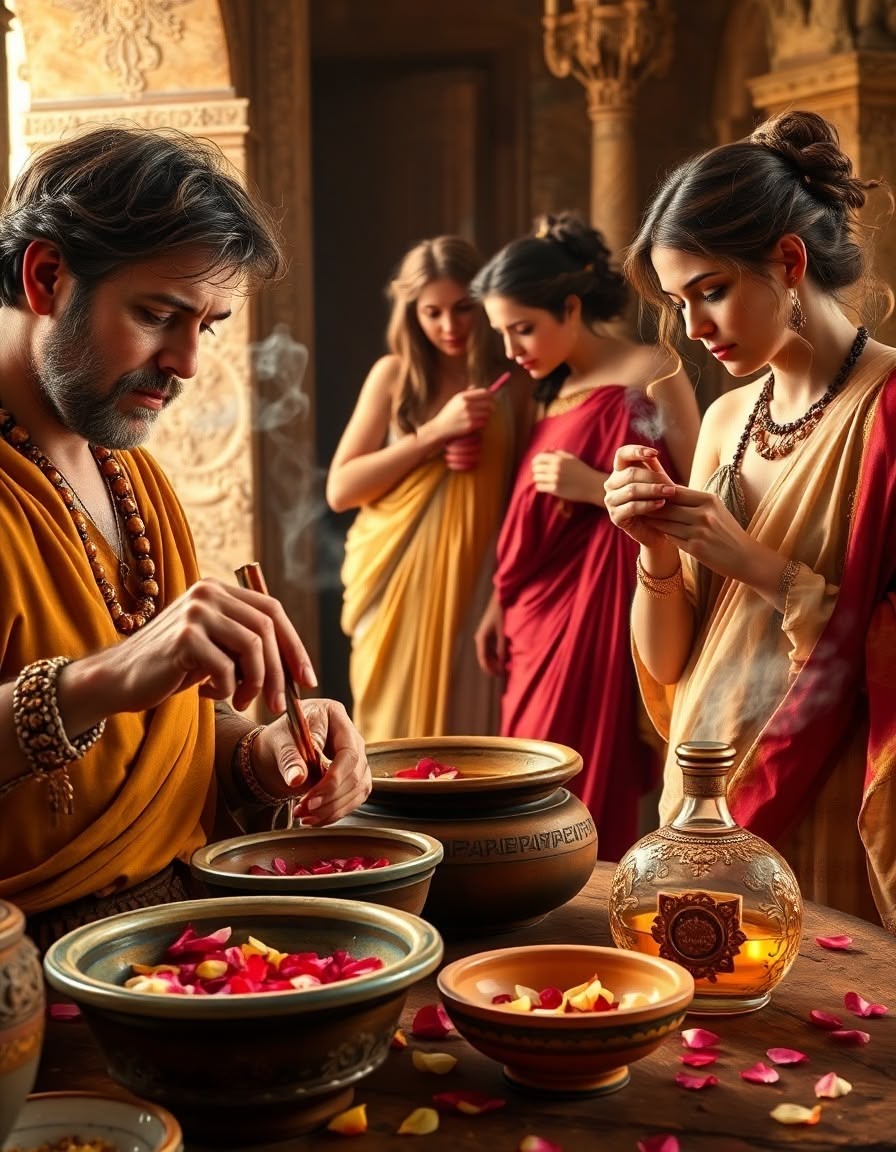
Legendary Scents, Marketing Mystique, and Decline After the Fall of Rome
Roman perfumeries were experts at using prestige marketing to sell their products. They did this by creating legendary stories about specific fragrances. These stories often involved gods, heroes, or faraway places, making the scents more appealing and justifying their high prices. For instance, a perfume might claim to have rare ingredients collected by nymphs or secrets passed down from Cleopatra herself. This combination of myth and business made perfumes more than just expensive items; they became highly sought-after symbols of wealth and intrigue.
The Power of Storytelling in Perfume Pricing
The price of perfume didn’t just depend on how rare its ingredients were; it also relied on the power of storytelling. The more captivating the tale behind a fragrance, the higher its perceived worth. Customers were willing to pay top dollar for a scent that came with an enchanting legend, turning perfume into a status symbol.
The Impact of the Fall of Rome and Christianity on Perfume Use
After the fall of the Roman Empire, there was a noticeable decline in perfume use. This decline was heavily influenced by the rise of Christianity. Early Christian leaders looked down upon extravagant displays of wealth, including the use of perfumes as adornment, seeing them as morally questionable or even sinful. Instead, they promoted modesty and simplicity, viewing perfumes as signs of pagan excess rather than sophistication.
The Shift in Cultural Values
As Christianity spread across former Roman territories:
- Public celebrations like banquets became less common.
- Bathhouses, once popular places for indulging in fragrant pleasures, lost their significance.
This change in cultural values had a direct effect on the demand for perfumes and disrupted established trade routes that supplied exotic ingredients.
Transformation of Scent Practices
With the influence of Christian teachings:
- Scent practices shifted from being public spectacles to private or religious rituals.
- The vibrant perfumery culture that thrived under imperial support began to fade away.
As a result, the once-bustling world of perfumes experienced a decline during this period.
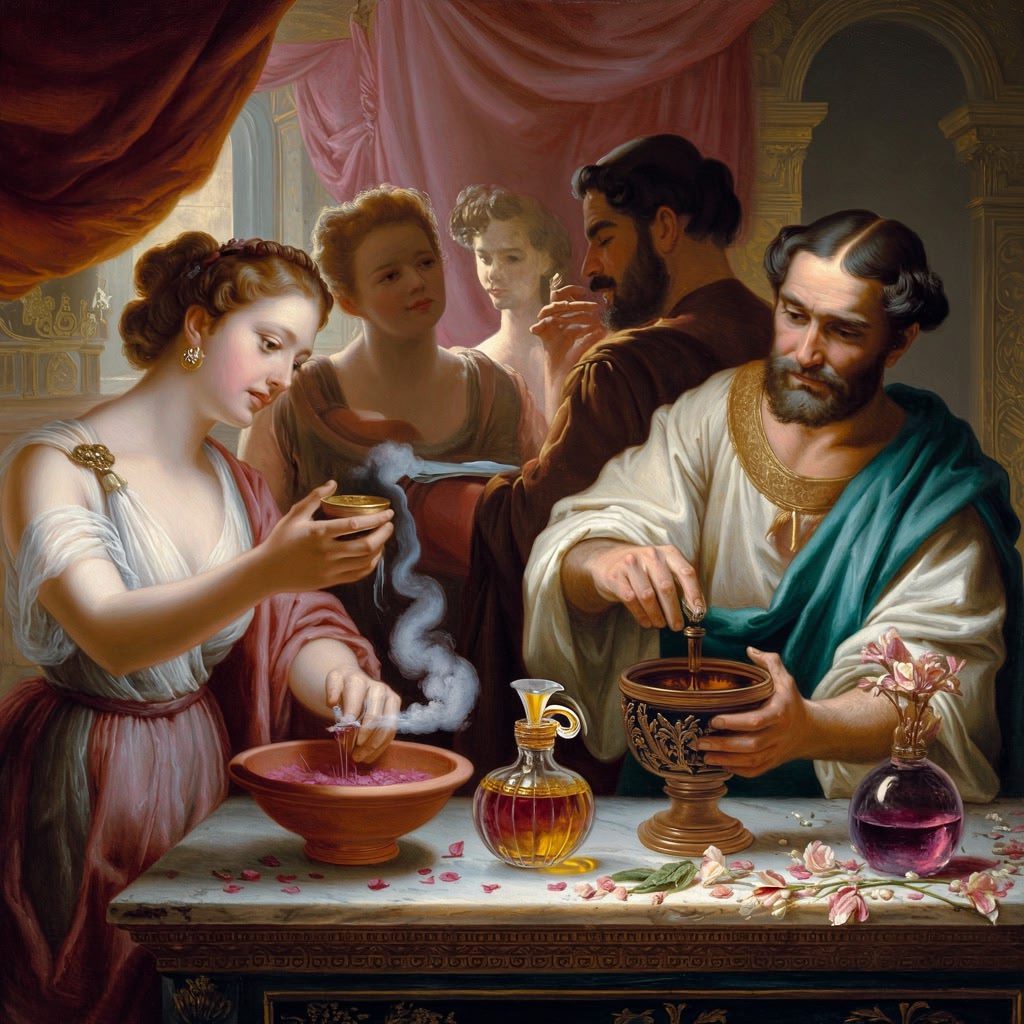
Revival During the Crusades: A New Era for Perfume Trade
The Crusades revival marked a significant resurgence in the perfume industry, reconnecting Europe with the exotic scents of the East. As crusaders traveled through the Mediterranean and Middle Eastern regions, they encountered rare ingredients such as frankincense, myrrh, and spikenard—aromatics highly prized in Roman perfumeries.
- Renewed East-West trade routes reopened channels for importing precious resins, spices, and floral essences.
- Markets in cities like Venice and Genoa flourished as hubs for these luxury goods.
- The infusion of Eastern olfactory traditions blended with remnants of Roman perfume culture, enriching scent compositions.
This era reestablished perfumes not only as symbols of status but also as cultural bridges between distant worlds.
Conclusion
Roman perfumeries reveal a rich cultural history where scent was more than just a fragrance. It represented power, showing off wealth, status, and political influence in society. Perfumes were used to create identity and grab attention, connected to rituals of beauty and seduction that shaped social interactions.
The hidden world of Roman perfumeries teaches us how ancient civilizations used scent to convey intricate messages about power and attraction. This blend of beauty and seduction throughout history highlights perfume’s enduring significance as a potent cultural symbol — an olfactory language that transcends time and impacts how societies communicate.

